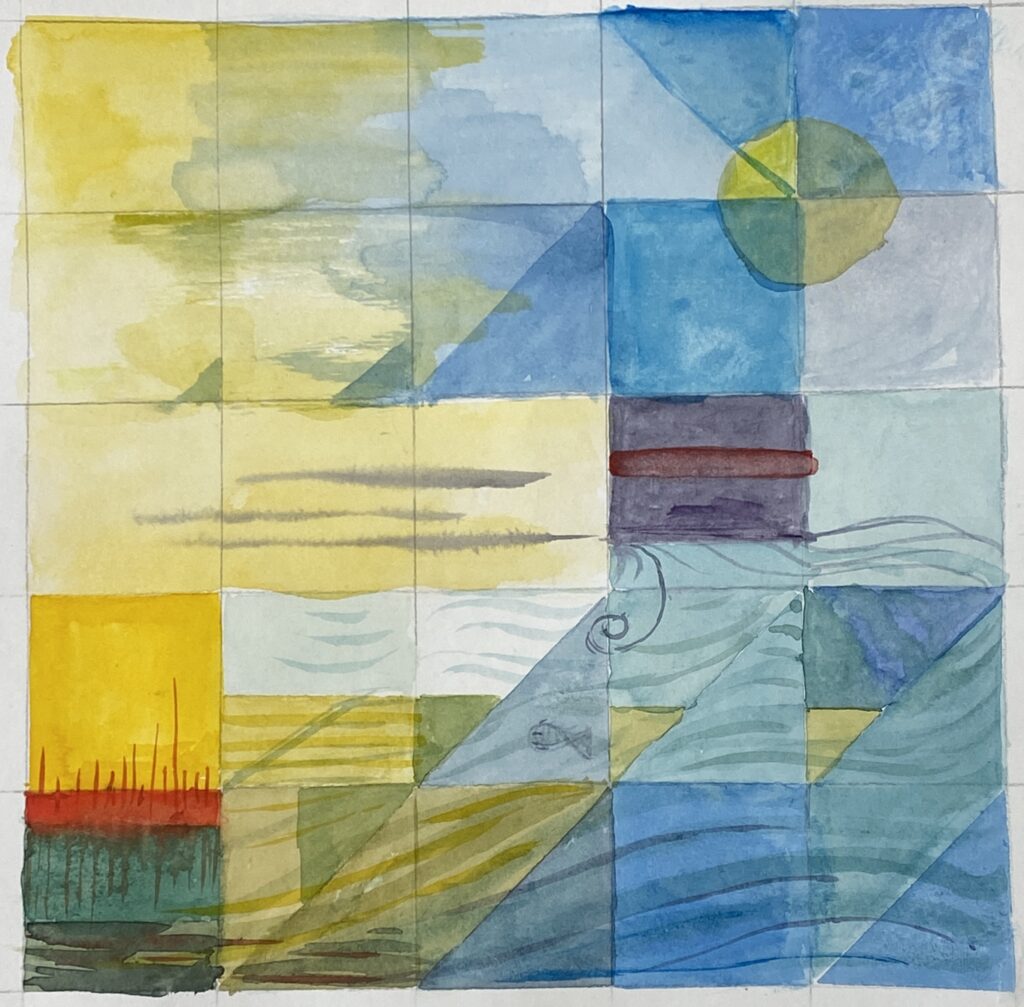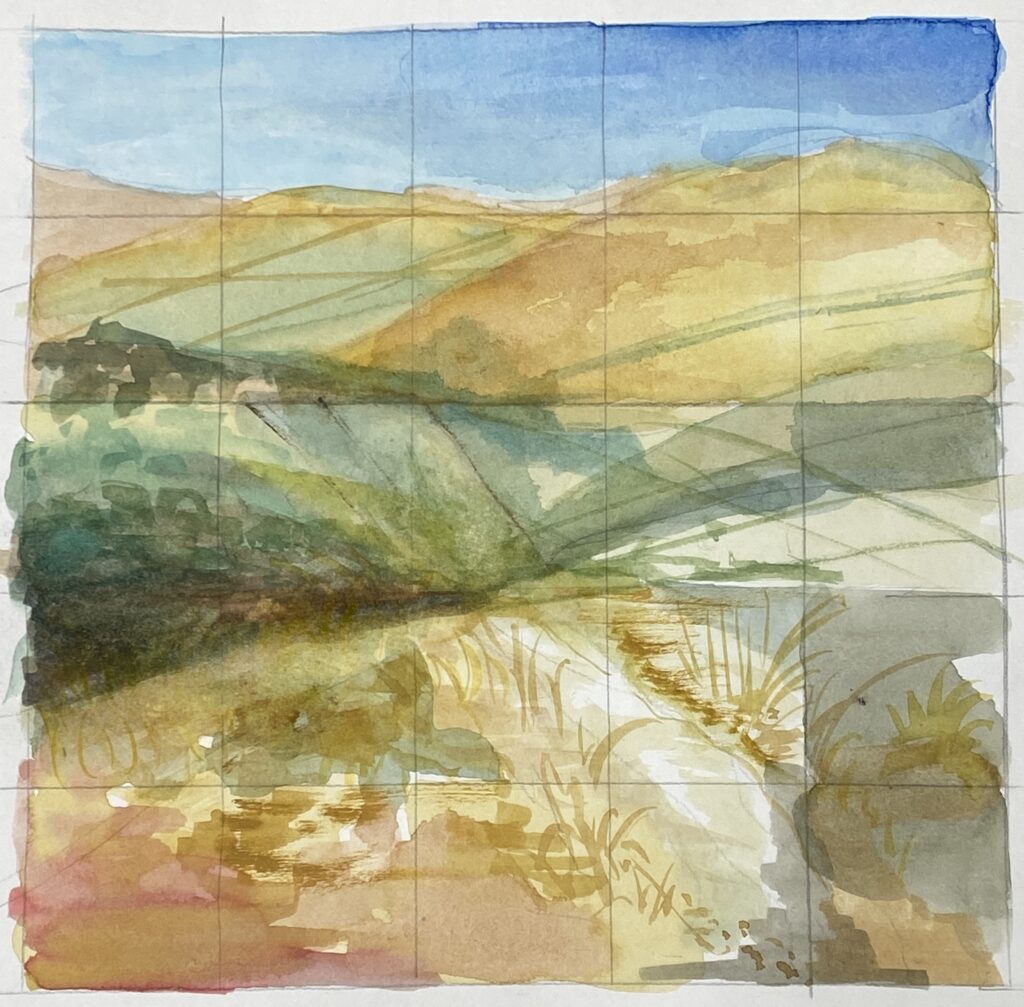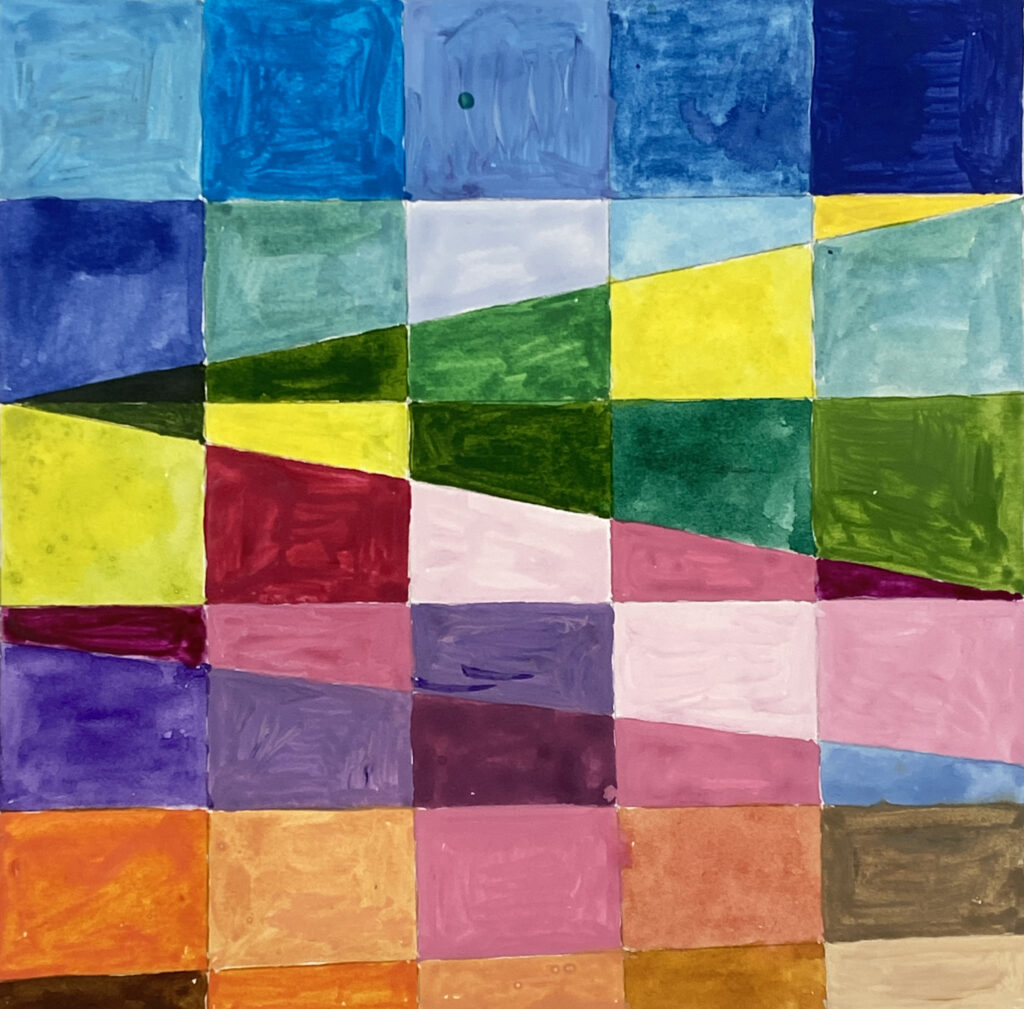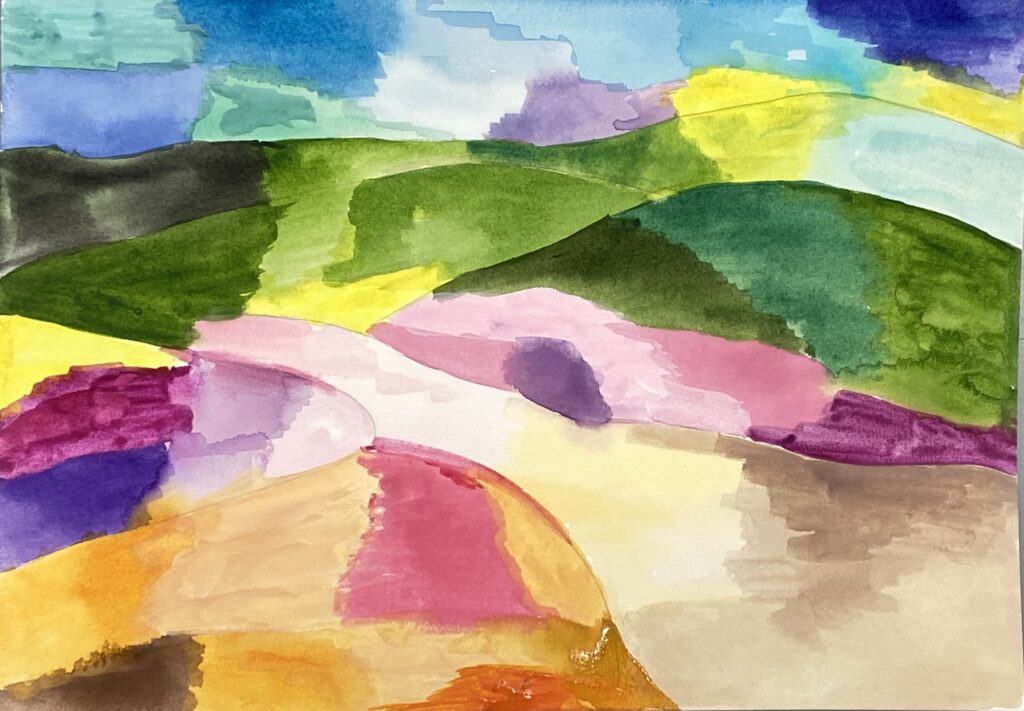Update: Two lesson plan ideas, with examples of students work, have been added to the end of this resource.
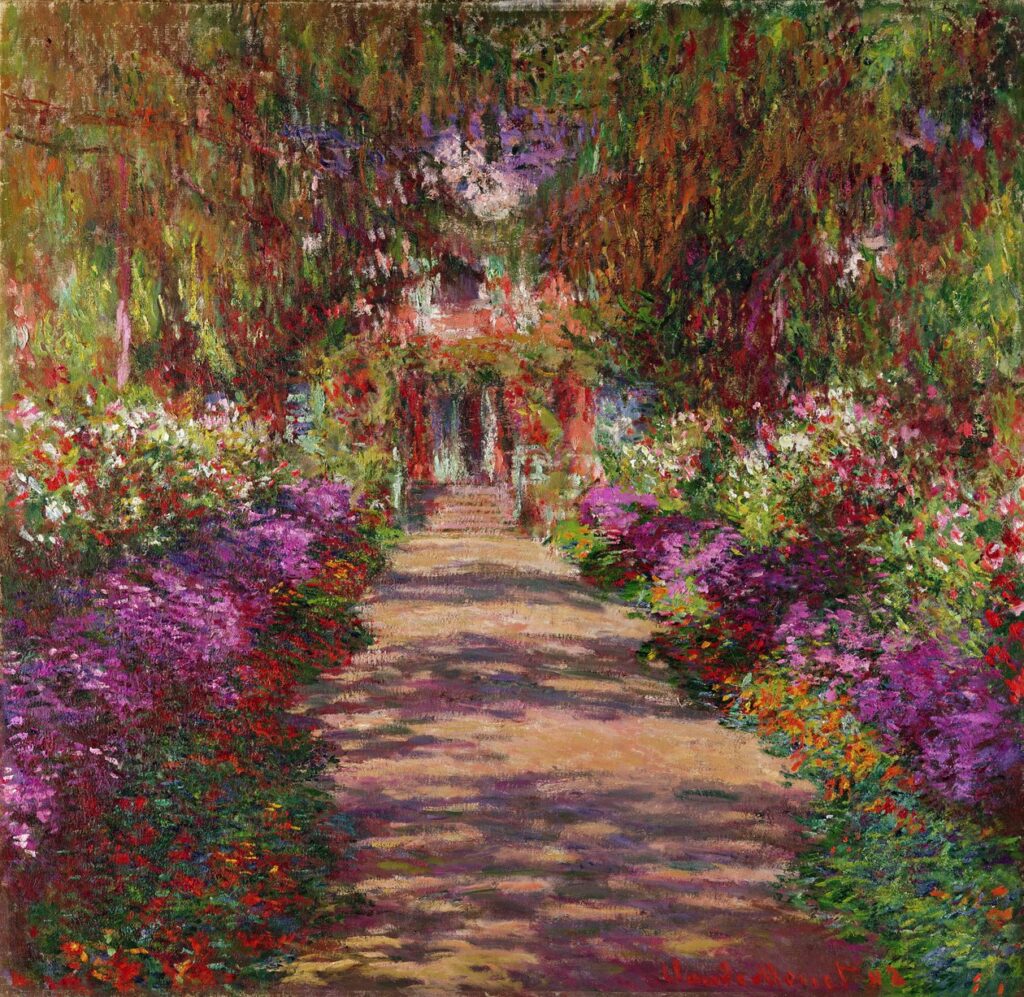
Claude Monet
Probably no-one evokes summer colour like Claude Monet who found inspiration for most of his later paintings in his self-designed garden at Giverny in northern France. Monet had long been an avid gardener but it was at Giverny, his last home and the place he lived for the longest, that his vision for a garden became a reality.
He painted in many different lights and at various times of day, both close-ups, such as patches of water-lily pond, and long views of walks through flower-beds.
Along with the other impressionist painters, Monet exploited many of the new materials and items of equipment developed in the 19th Century, particularly those which aided outdoor, en plein air, painters such as he. These included collapsible and portable easels, tubed oil paints, metal-ferruled flat brushes and wet-canvas carriers. He would mix colours both on his palette and directly on the canvas. Picking up a different colour on each side of a flat brush he would then partly mix them on the canvas with a quick twist of the brush.
Crucially, the industrialised production of paints gave artists like him access to a wider range of vivid paints which brought heightened light and colour into his work. The Art Institute of Chicago has carried out detailed research into Monet’s techniques and colours. You can read about its findings here.
If you want to follow in his colourful footsteps his key colours were Lead White (modern, safer equivalents Titanium White or Flake White Hue), French Ultramarine, Cobalt Blue, Red Lakes, Vermilion, Viridian and Cobalt Violet.
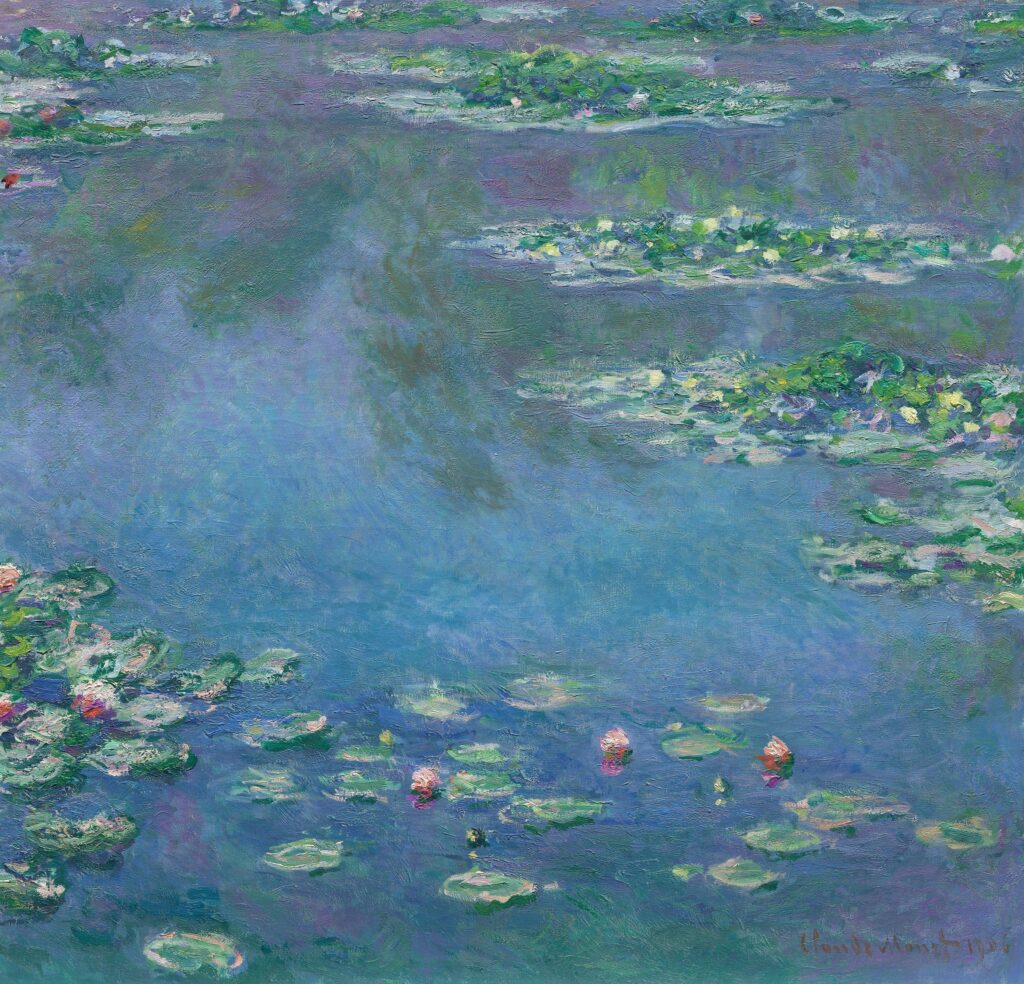
Uman
‘I think everything I do now is a self-portrait in different ways. Even my abstract paintings, mythical in nature, are self-portraits. I love drama, and so I depict myself with several mouths, and several eyes, just like a creature.’
Though not specifically a painter of Summer, the background, colour range and painting style of Somalian-born artist Uman very much convey the ebullience, vibrancy and energy of that season.
Click here to reach the fascinating video Uman: In the Studio in which she talks about her life and work.
Her paintings draw on her cross-cultural experiences and explore both physical and spiritual worlds, intertwining abstraction, figuration, meditative patterning and a reverence for the natural world. Gestural and geometric patterns and marks are happily interwoven. Her work is not planned but develops organically from dreams, intuition and rigorous discipline.
She now lives and works in the USA but her times spent in Somalia, Kenya, the East African deserts, Norway and Denmark, as well as Manhattan, have all influenced her ideas and style.
Click here to reach a short video tour of her recent exhibition at Hauser and Wirth gallery in London.
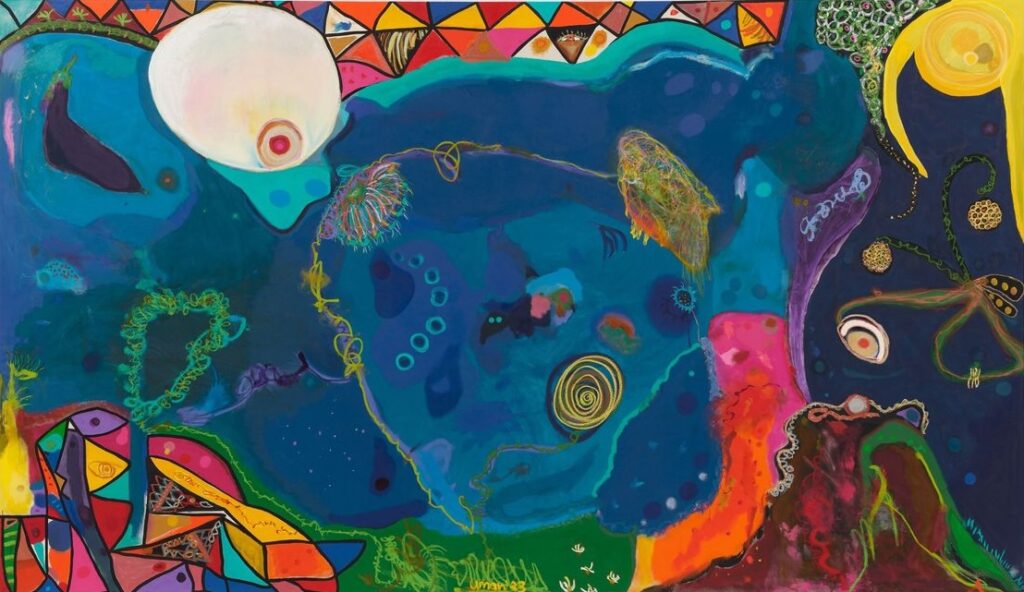
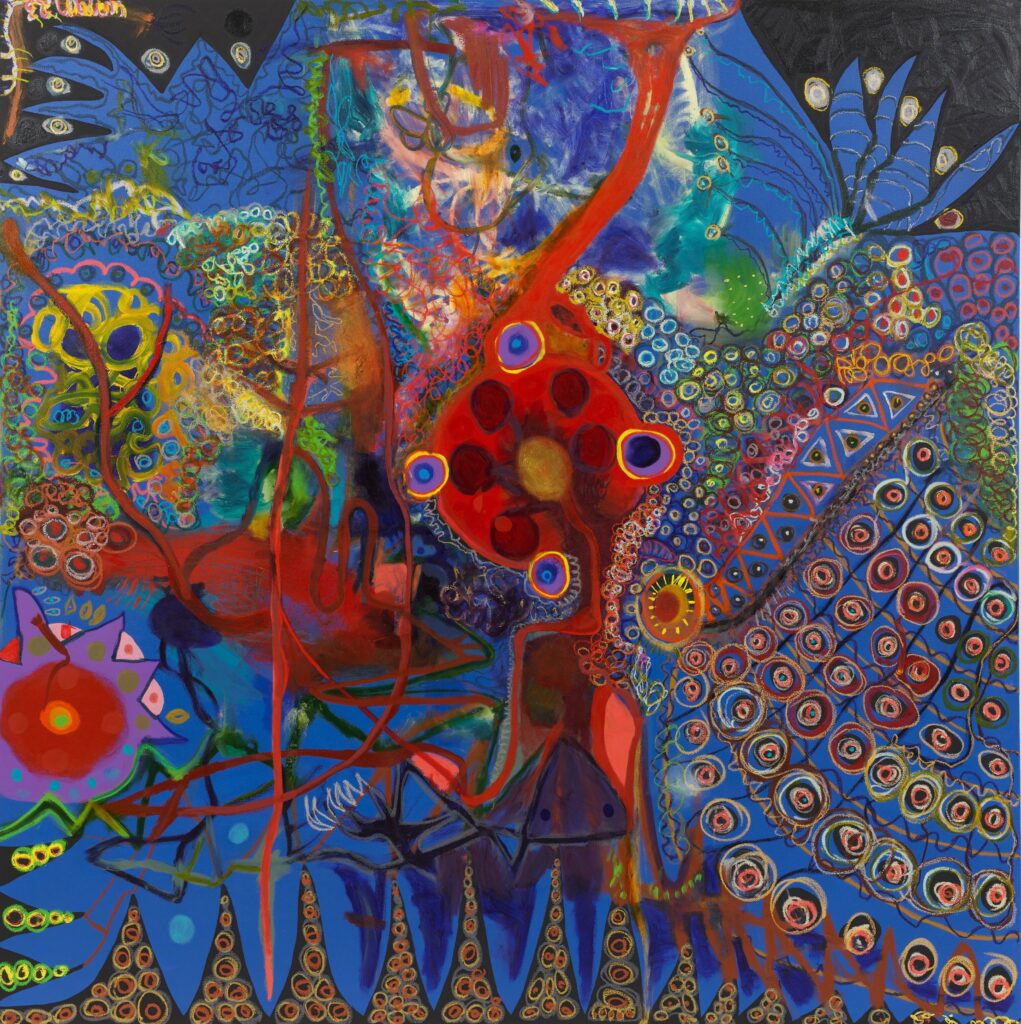
Ken Howard
Hugely prolific and successful figurative painter, Ken Howard, made paintings of summer beach scenes one of his trademarks.
A self-confessed workaholic, he is said to have created an astonishing 350 paintings per year. When in Cornwall, he would have a model coming in every morning for six days a week. This strict routine kept the momentum going. If he felt he had an unsuccessful attempt the previous day, he could not pause and wallow – he had to get up and carry on, thus reinvigorating his enthusiasm for the painting.
See Howard painting, inside and out, and talking about light and technique in this insightful 2 minute video Variations on a Theme: Ken Howard.
His landscape paintings were mostly produced rapidly outdoors in a style borrowed from impressionists such as Monet and Camille Pissarro. Quickly and intuitively applied marks captured fleeting clouds, people and waves. I am drawn to the way he emphasises the brightness of a sunny day by noticing little details such as the shadow of an otherwise hidden sunbather falling on a wind-break in the beach scene shown here.
Growing up in London, he began his artistic schooling in 1949 at Hornsey College of Art moving later to the Royal College of Art (1955-57). Abstract Expressionism was all the rage but he knew that he wanted to be a figurative painter. His work was outside the fashionable artistic mainstream but he was popular with the public.
With his realist approach to painting, he focused on what he could see and one of his main sources of inspiration was light. Howard’s paintings celebrate the world through light, whether it be flooding through the studio window on to a model, bouncing off the buildings in Venice or sparkling on the beaches of Cornwall.
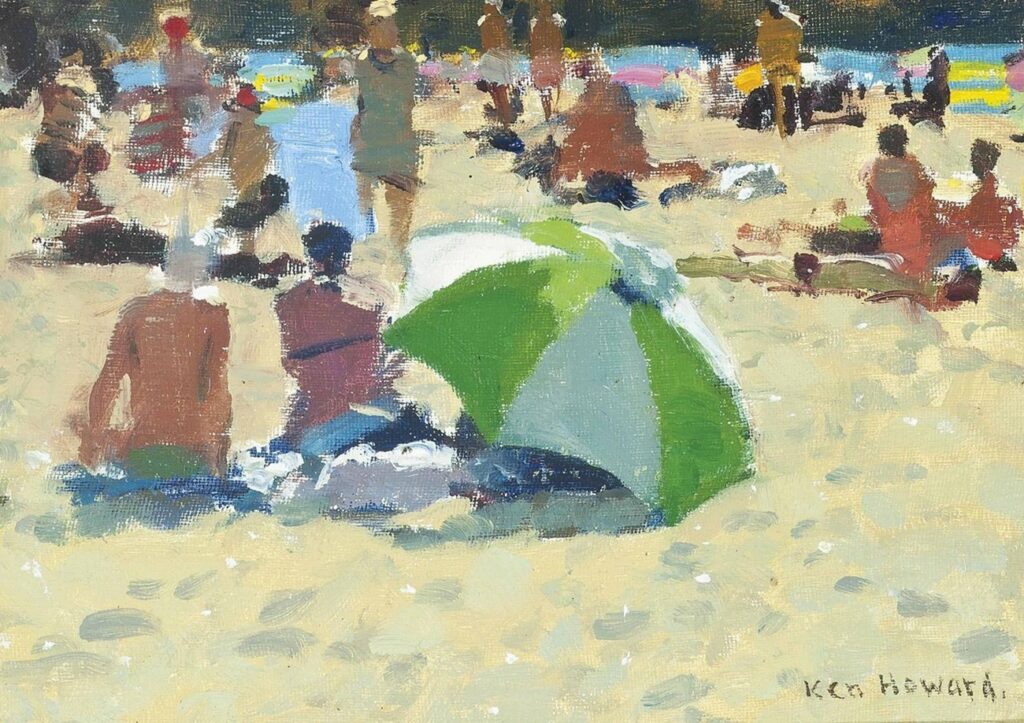
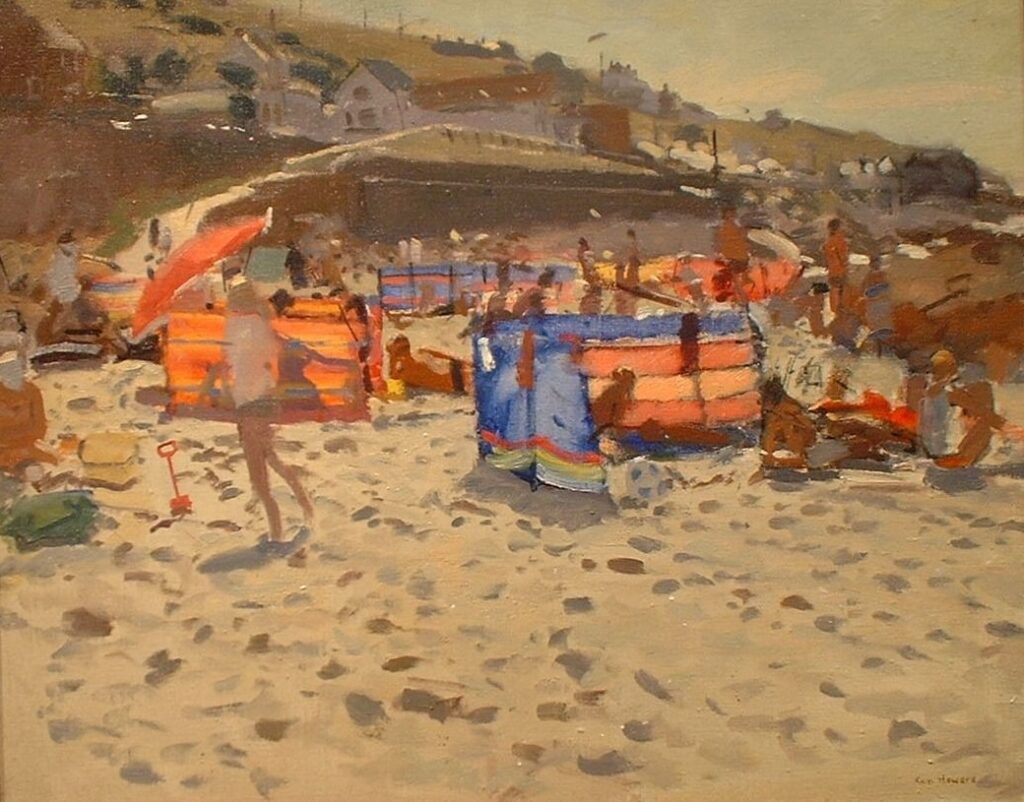
Lesson idea 1
Session 1 (2 hours):
1) Discuss colour using images of the work of artists who have painted summer scenes.
2) Explore the various primary colours students have in their paint boxes, and discuss colour bias in order to be able to mix fresh secondary colours suitable for painting ‘summer’.
3) Explore the ready made earth colours in their paint boxes.
4) Use primary colours to mix the same browns as in part 3.
5) Use a complementary colour or brown to tone colours down for shadows.
6) Mix a range of blacks and greys using primary colours, burnt umber and white only.
7) Mix the same colour palettes seen on postcards that show the work of artists who have painted summer scenes (4 x Quick 5 minute abstract responses)
8) Decide on a palette of 5 colours plus white for mixing ‘summer’.
Session 2 (2 hours):
Offer students a choice of black and white landscape images, either from photographs or the work of artists, to use as a starting point for producing their own paintings depicting summer.
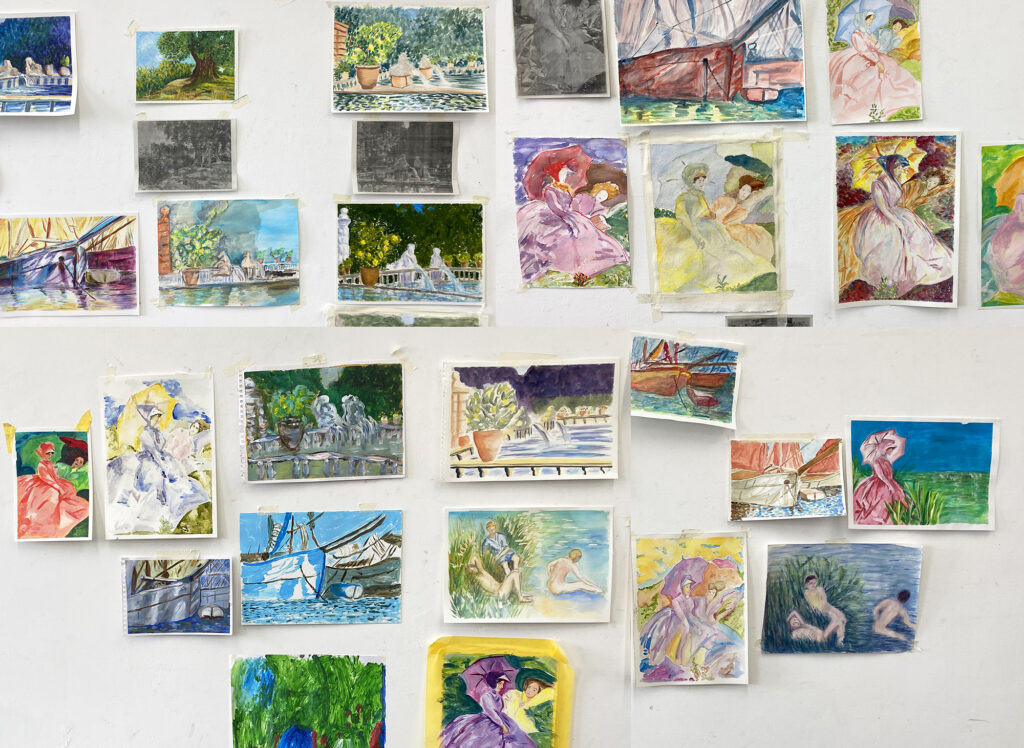
Lesson idea 2
I used the above as a starting point for an enjoyable 135 minute lesson for adults. It would be easily adapted for children too.
I introduced students to some of Paul Klee’s grid paintings (below) and discussed the use of colour and paint application techniques. I also showed a few minutes of Emma Biggs and Matthew Collings applying paint to one of their geometric abstract paintings (1m30s-3m).
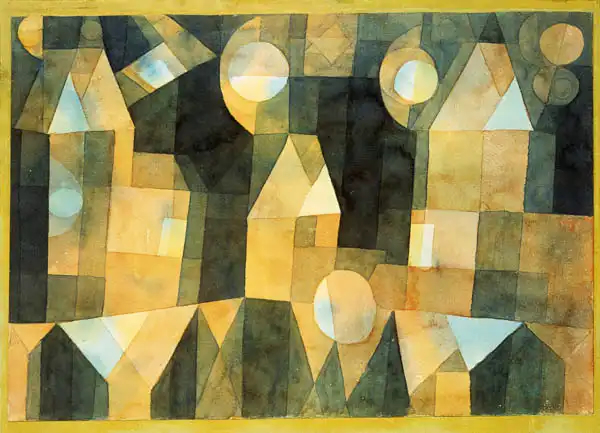
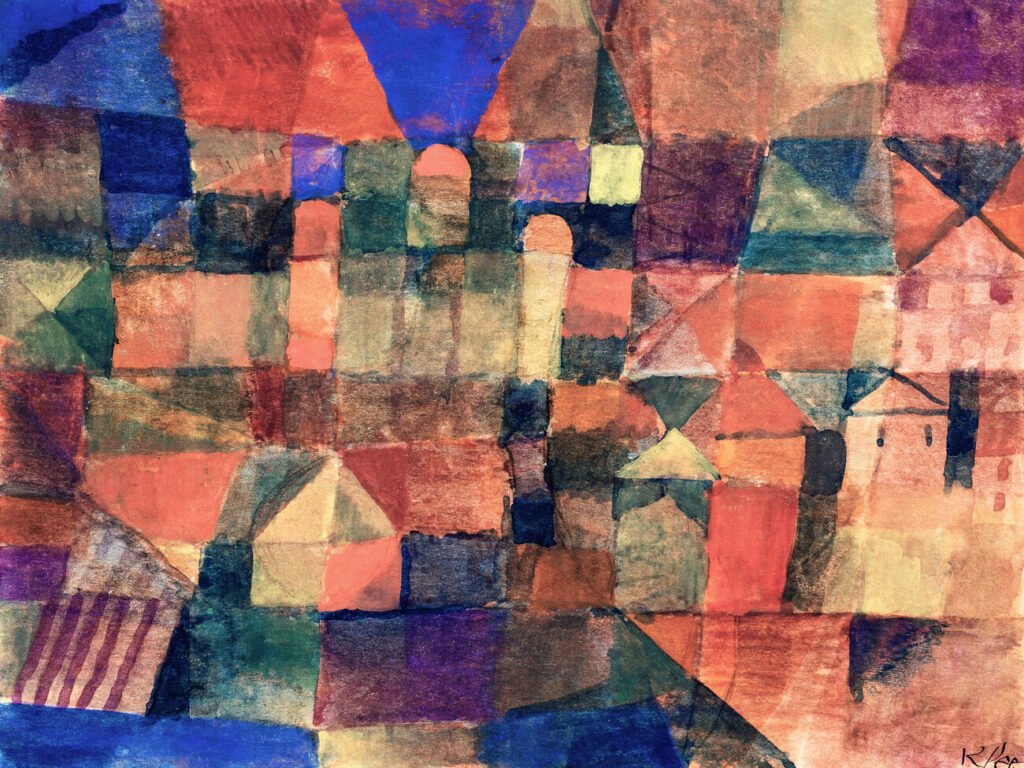
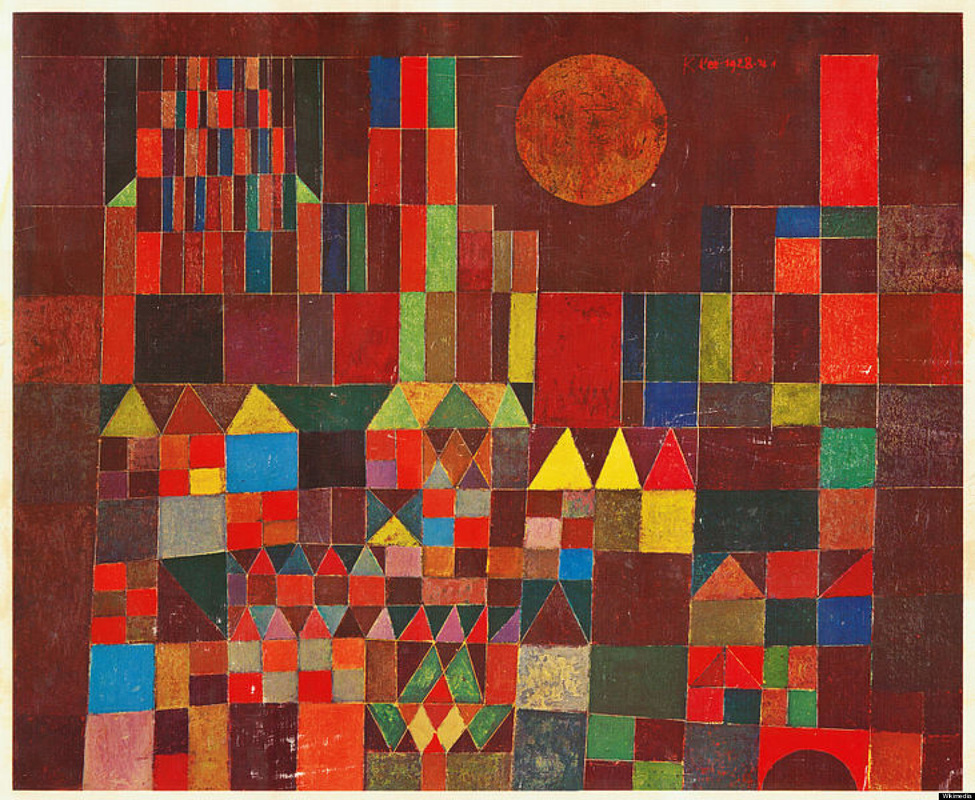
Students were then given an hour to respond to what they had seen by producing a grid painting / collage with the title: The Colours of Summer.
For the second half of the session, students were given a black and white copy of a landscape photograph and challenged to make a painting from it using only the colours and painting techniques in their grids.
